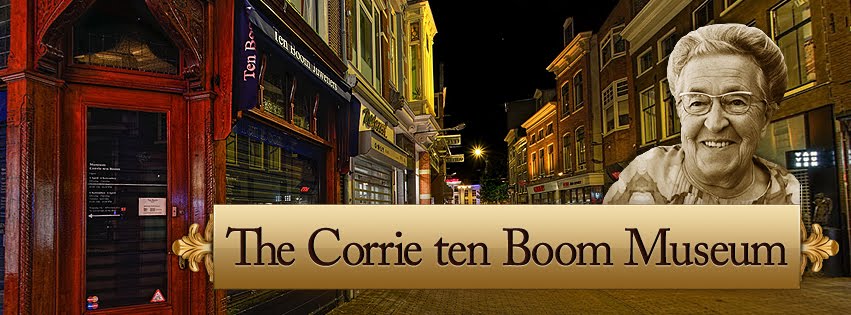They were taken to The Hague, which was rumoured to be the location of the Gestapo headquarters in Holland. The chief interrogator there seem shocked that Caspar had been arrested.
I’d like to send you home, old fellow. I’ll take your word that you won’t cause any more trouble.
- Gestapo chief
If I go home today, tomorrow I will open my door again to any man in need who knocks.
- Caspar
Corrie tried to free the others of blame by admitting to being the ‘ringleader’. It failed and many of the group were moved to prison.
They arrived at Schvengenin Prison, where the ten Boom family were separated. Corrie was sent to a cell shared with three other prisoners. But, after two weeks, she was taken to a doctor, and then to solitary confinement, probably due to illness.
On 20 April, 1944 (Hitler’s birthday), all of the prison guards were absent at a party. The women began to call out to each other through the food holes in their doors, passing names left and right down the corridor. They tried to send messages and find out about other prisoners. Corrie heard rumours of a prospective Allied invasion of Europe, that Nollie had been released more than a month before, and that Betsie was still alive, though in prison. Peter, Pickwick and Willem had all been released as well. There was no word of Caspar.
Soon afterwards, Corrie received a letter and a package from Nollie, containing some of the items from Corrie’s prison bag and the news that Caspar ten Boom had died 10 days after his arrest. Corrie added another date to her list scratched on the wall – ‘Father released’.
Corrie noticed that the handwriting on the envelope was slanting up towards the stamp in an unusual way. Upon investigation, Corrie found that there was a message hidden under the stamp: ‘All the watches in your closet are safe’. Corrie knew that those hidden in the secret room were still safe.
Late in May, 1944, Corrie was finally interrogated. She was given a list of names to see if she could identify any of them. She realised, for the first time, the value of the ubiquitous Smit, because she knew none of the names, and could not give away any signal of recognition. It became clear to her that the Gestapo believed that the Beje had been the headquarters of raids on food ration offices, while Corrie knew nothing beyond her own cards.
Over three successive mornings Lieutenant Rahms gave up the pretence of questioning her, telling her of his family, and asking about her pre-war life in Holland. At a later date, he took Corrie to the reading of her father’s will. There she was reunited with her family, and learned that Kik had been caught and sent on a prison train… probably to Germany. She was also told that the local police chief had arranged for a couple of sympathetic officers to be assigned to surveillance duties of the Beje; and they had sent the Jews to new hiding places. Before she left, Nollie gave Corrie a bible in a pouch that could be hung round her neck.
Some time after this, an order was given to the prisoners to prepare for an evacuation. Spotting Betsie in the crowd waiting to board the train, Corrie forced her way towards her. The four months in Schvengenin had been their only time apart in 53 years, and Corrie felt more confident besides Betsie.
They arrived at Vught, a Concentration Camp for political prisoners, where they were given forms, which another prisoner told them meant they were to be released. Instead, they were sent into the main camp. Corrie was shaken by this disappointment, but Betsie saw it as a chance to share God’s word.
